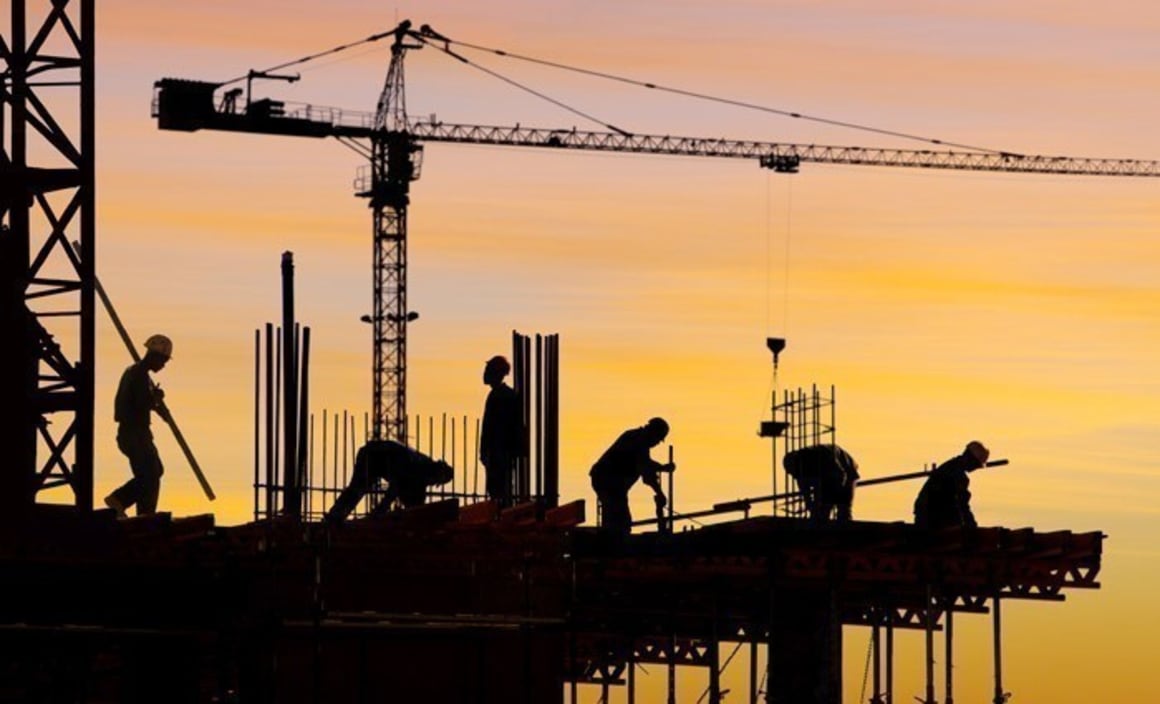Modest downturn in non-residential building sector: Andrew Hanlan

GUEST OBSERVER
Private building activity is set to soften in 2016 after strengthening in four of the past five years.
Approvals have long since declined, led lower by the office market, with recent activity levels sustained by reducing the work pipeline. We anticipate only a relatively modest moderation in private activity.
By contrast, public works - accounting for 20 percent of total activity - is beginning to recover, after the downturn of recent times. This will provide only a partial offset to weaker private sector activity.
Click to enlarge

Activity: Real private building activity turned down in the March quarter, contracting by 6.7 percent to be 4.4 percent lower than a year ago. That follows a 31% expansion in the five years to December 2015, including a 7.8 percent increase in 2015.
Public works began to turn higher in the March quarter, advancing by 2.7 percent, to still be 11.7 percent lower than a year ago.

Total real building work contracted by almost 5% in the March quarter, to be almost 6% lower than a year, having been broadly flat in both 2014 and 2015.
Total commencements lifted to be above par in the March quarter, valued at $8.9bn, up from a 2015 average of $7.5bn and averages for the previous five calendar years ranging between $8.2bn and $8.4bn. That said, the March result is insufficient to prevent a near-term moderation in activity.
Private commencements moved broadly sideways in Q1, at $6.2bn, relative to $5.9bn on average for 2015, which is down from the three previous calendar years, ranging between $6.3bn and $6.9bn. Public commencements lifted in Q1 to $2.7bn, the strongest quarterly result in four years, and up from a 2015 average of $1.5bn. The result was boosted by health projects proceeding across Tasmania, NSW, South Australia and the ACT.
The pipeline of work outstanding has been significantly reduced since mid-2014, to be at $20bn, down from a peak of $27bn, as work progresses on major health projects and office buildings across the states. For private projects, the work pipeline at $13.9bn currently, down from $20.7bn, is approaching the lows of 2009 to 2011. For public projects, the pipeline has lifted to a still low $6.2bn, up from $4.7bn in mid-2015.
•As to the prospects for a near-term moderation in building activity, it is notable that private commencements are running 13% below the current level of work done, while for the sector as a whole, the figure is about 7 percent below.

Commencements and approvals
Commencements were above par in the opening quarter of 2016, coming in at $8.9bn, up from the 2015 average of $7.5bn. Strength was evident in public projects, at $2.7bn, up from a 2015 average of $1.5bn. Notably, a number of health projects commenced in the quarter, across Tasmania, South Australia, the ACT and NSW. Private commencements tracked broadly sideways in March 2016, at $6.2bn relative to a 2015 quarterly average of $5.69bn.
Notwithstanding the positive start to 2016, the broader trend remains that commencements and approvals have taken a step lower since the first half of 2014 - albeit a relatively modest one by historical standards.
As to the more timely building approvals, these have been broadly steady of late, but are down from earlier highs - see charts opposite. In the year to May 2016, total approvals increased by 2% relative to the year prior, leaving them 14 percent below the peak in the year to February 2014. For private sector projects, approvals are 15% below the peak of early 2014, including a 5 percent decline over the past year.
The office market is a key driver - but certainly not the only driver - of building approvals and building activity. Office approvals are characterised by large swings reflecting the long lead times for often large projects. Over the past decade, office approvals have moved through two cycles, with a pre-GFC peak in 2008 of $9bn and a post-GFC peak of almost $8bn in 2013, see chart opposite. Currently, office approvals are at cyclical lows, at $3.7bn, some $4bn, 50 percent, below earlier highs.
Total building approvals are only modestly below the highs of early 2014, in contrast to the sharp retreat in the office market. This divergence reflects a number of key trends, notably: strength and the growing importance of social building projects (which includes health, education, aged cared, accommodation and entertainment); the resilience of the retail sector, as competition for the consumer dollar intensifies; and a lift in public approvals during the past year, albeit from relatively low levels.
State-by-state
Conditions and the outlook are quite varied across the states. As at the national level, the importance of social building projects, a lift in public investment, and resilience in the retail sector together add nuances to the state-by-state picture not apparent from differences in office markets across the capital cities.
Real building work nationally declined by 6% over the past year, down $0.5bn, centred on a softening of activity in: Victoria (from a high base); South Australia; and WA - which more than offset a lift in Qld and Tasmania, while the cycle was cresting in NSW.
In the mining state of WA, building activity in 2016 has further downside, notwithstanding firmer approvals over the past couple of months. By contrast, conditions in Qld are likely to be reasonably resilient with retail and social approvals strengthening of late. In Victoria, where the work pipeline is now relatively low, much of the pull-back in activity has occurred. In NSW, a sizeable work pipeline will support activity near-term, ahead of a likely moderation - one that may be relatively mild if a round of new projects receive the go ahead. In South Australia and Tasmania, a lift in public investment will support activity going forward, particularly in Tasmania.
Andrew Hanlan is senior economist for Westpac and can be contacted here.